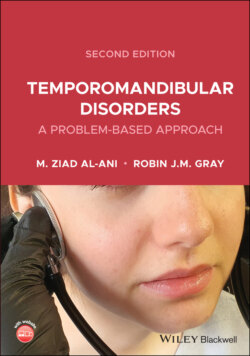Читать книгу Temporomandibular Disorders - Robin J. M. Gray - Страница 10
Preface to the Second Edition
ОглавлениеThis is the second edition of Temporomandibular Disorders: A problem‐based approach. This edition is an updated and revised copy of the first edition to enhance making clinical relevance immediately accessible to the reader.
All chapters have been revisited and two new chapters were added. More colour photographs have been used and flowcharts have been added in Appendix I for a brief description of some essential concepts in this field. A link in the text was added with a symbol indicating the number of the relevant flowcharts at the end. The text has been updated with many new relevant sections. There are two new chapters on evidence‐based splint therapy management as well as the aetiology and management of bruxism. These are evolving and dynamic topics which need continuous updating. Some chapters have changed relatively little, such as Orofacial pain and You and the Lawyer, but the importance of these two aspects have been highlighted in different sections of the book. Self‐directed learning is critical to develop understanding and some new questions were added to Appendix III. References have been updated and the most relevant evidence‐based references and other key papers were included in the Further Reading of each chapter.
This edition, sadly, did not witness the contribution of Robin Gray. He died shortly after the book proposal of this second edition was submitted.
This book sets out to establish some new concepts and philosophies in temporomandibular disorder (TMD) learning. It contains a series of everyday situations that will be encountered in practice. The answers are there but it is up to the reader to find them!
Learning is a dynamic process and those who are involved actively will gain more than passive recipients of knowledge. Problem‐ or enquiry‐based learning should provoke thought and arouse readers' curiosity, motivating them to learn and guiding them into creative thinking. Giving readers a real‐life clinical scenario will structure their thoughts, increasing the effectiveness of information delivery and lead to a logical conclusion.
The case histories are stand alone, and each should contain sufficient information for the reader to reach the correct diagnosis and formulate a correct treatment plan that is in the patient's best interests.
There will inevitably be some repetition in the text especially in relation to the chapters on anatomy, function, pathology, classification, and clinical examination. This is because we did not want the reader to have to constantly cross‐refer to earlier chapters when reading the case histories. Although there will be some duplication, the case histories will introduce new facts of specific relevance to that situation. We hope that this will meet students' demands because the earlier chapters which are for information can be applied in the later case studies.
There is a unique link to an online interactive quiz (www.wiley.com/go/al-ani/temporomandibular-disorders-2e). This quiz aims not only to test your knowledge of TMD but also to make reading this book more enjoyable, stimulating, and productive.
We have provided a further reading list of relevant evidence‐based articles which, as far as possible, are either from systematic reviews or randomised controlled trials published in evidence‐based dentistry journals. Therefore, they provide the most up‐to‐date information.
The final chapters are practical guides of how to make splints and samples of patient information sheets that can be used as templates. We hope therefore that we have addressed not only WHY but also HOW.
